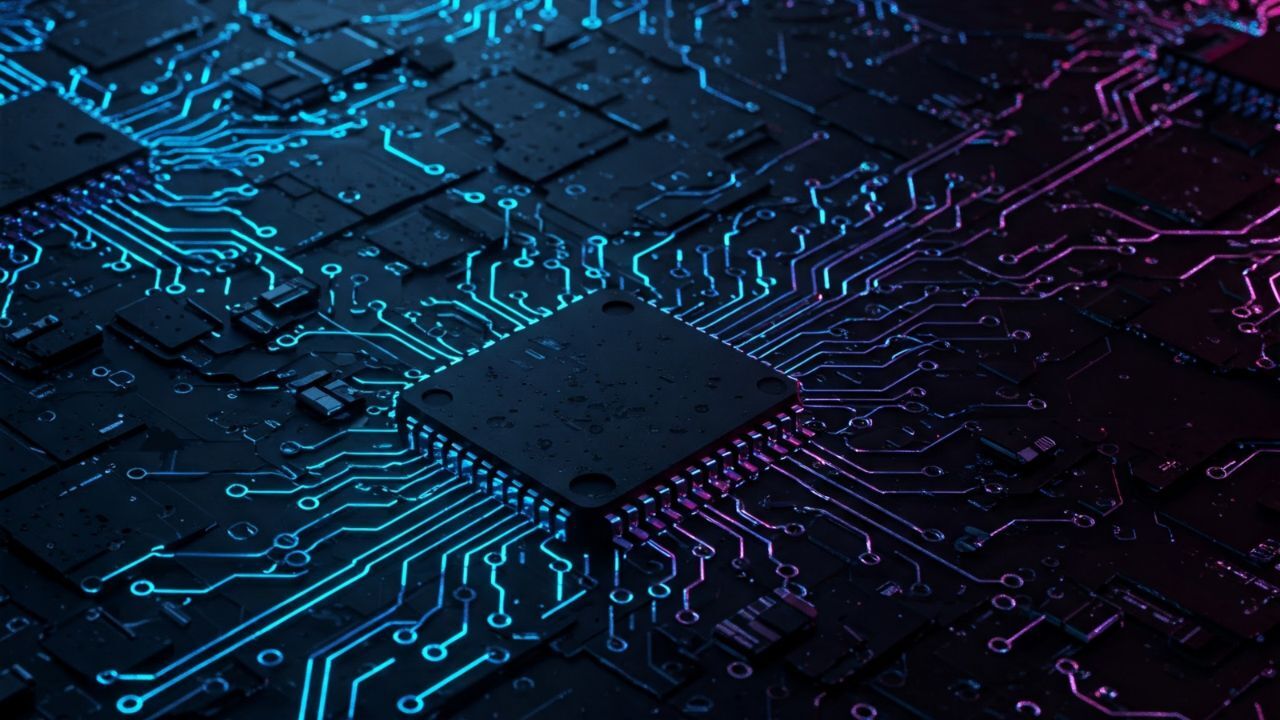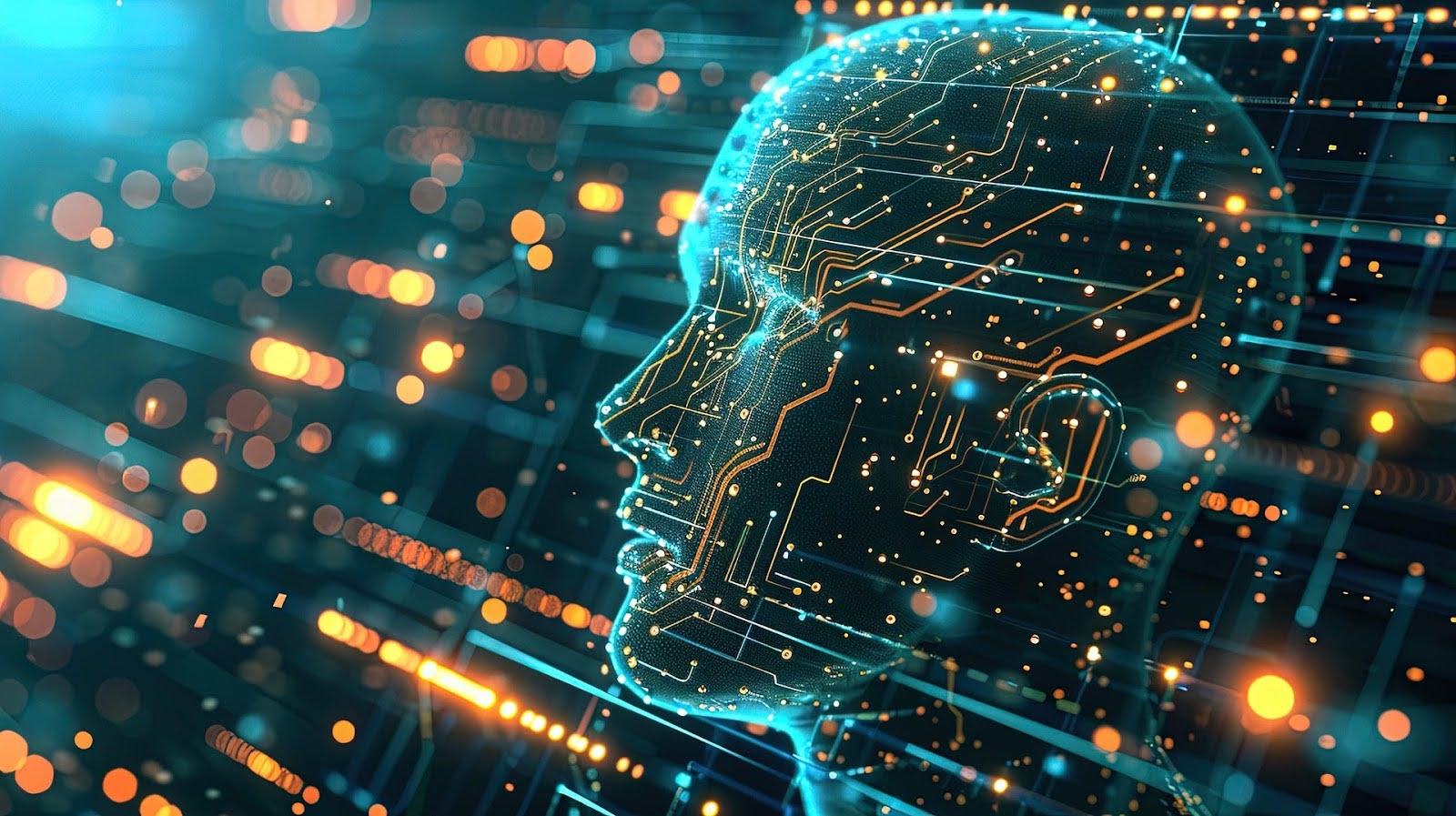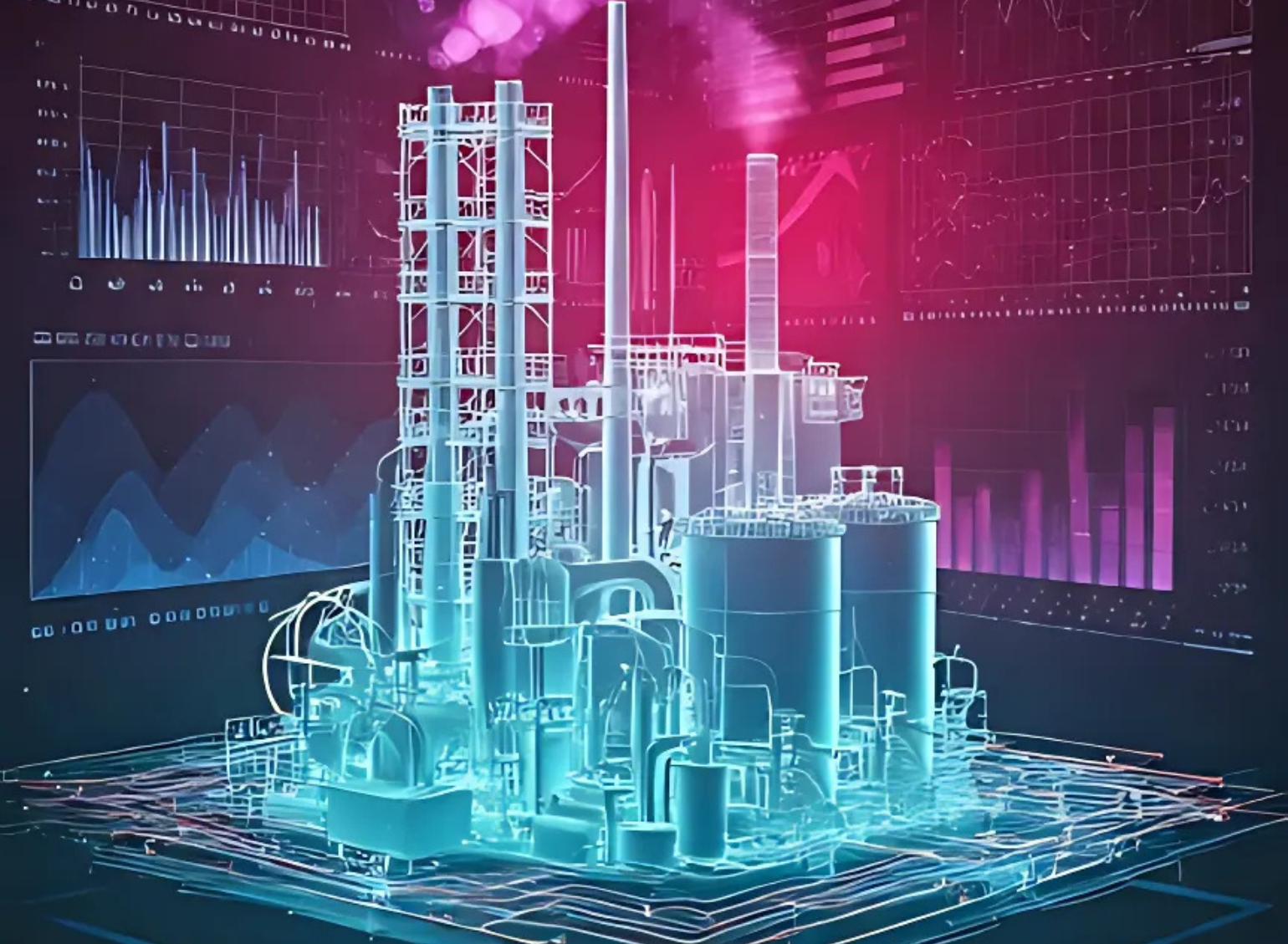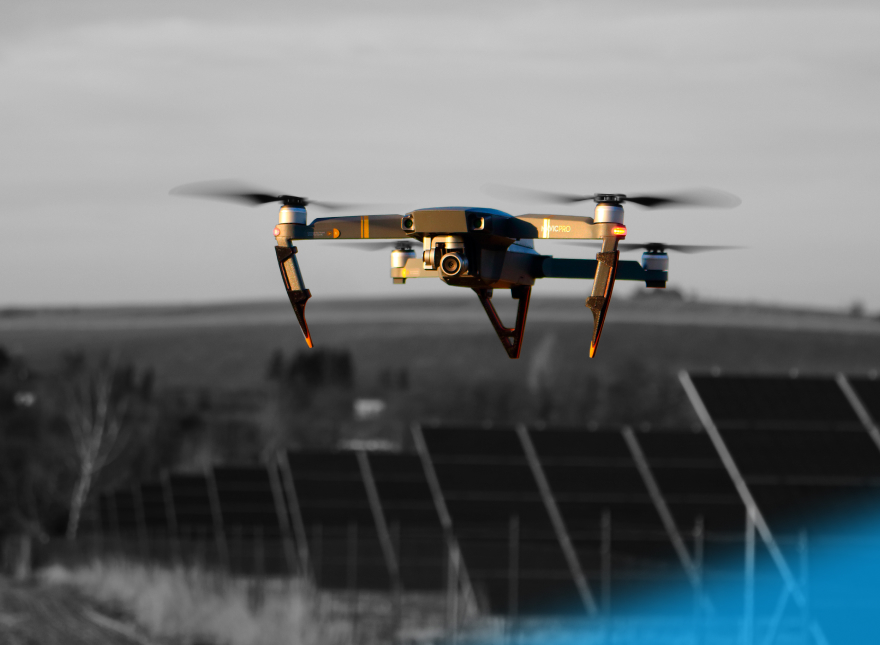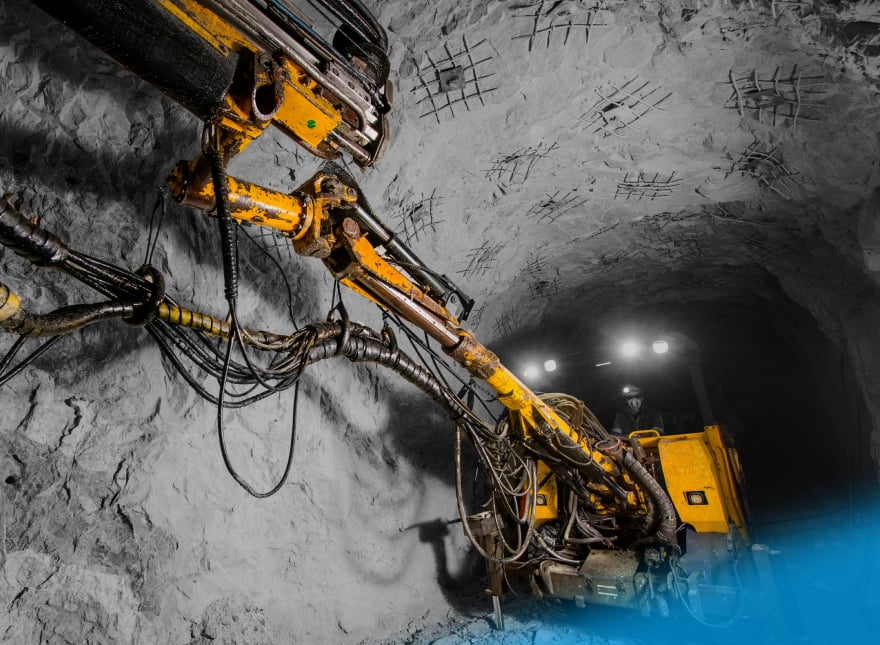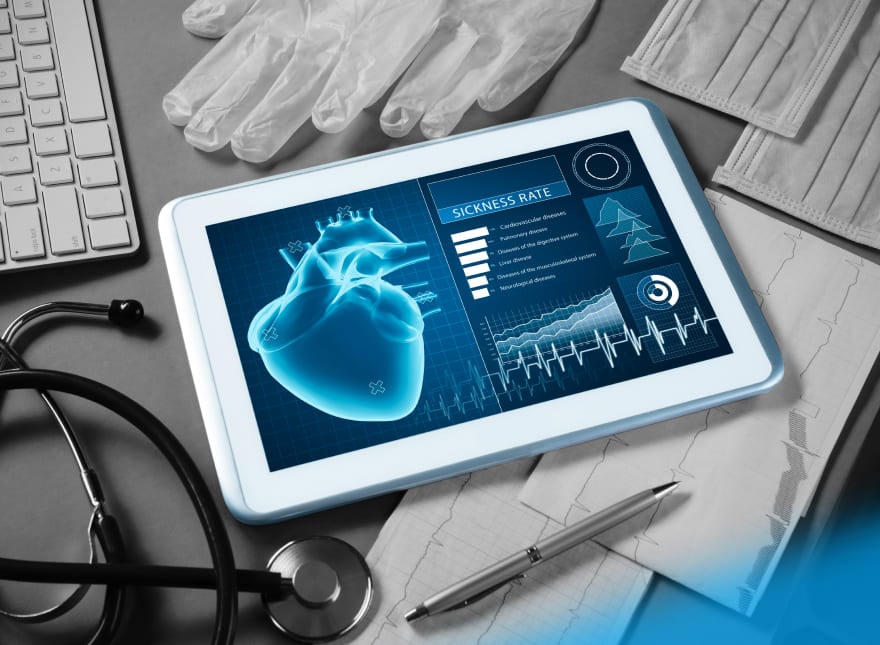Check out our latest blog article: From component to enterprise – modular robotics done right.
Innovation in the Energy Sector: Technology Trends and Use Cases
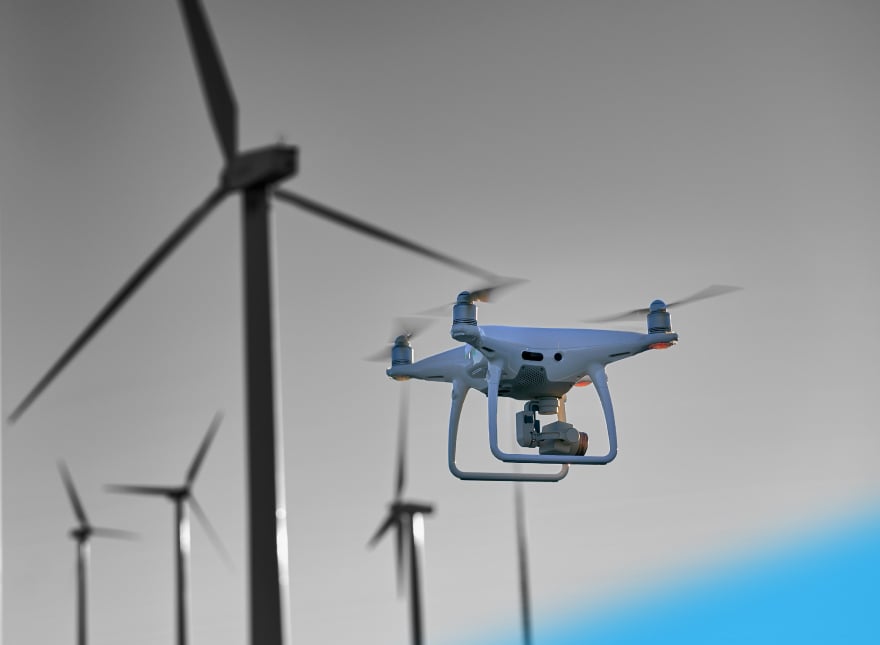
The world today is facing an urgent need to transform its energy system. Global energy consumption continues to grow, even if it's at a slower rate than before—around 1-2% per year. Climate change remains a serious concern. Newer, stricter regulations force companies to mitigate their impact. They need to cut energy waste and even shift to alternative electricity sources.
Changing customer demand drives the energy sector, too. Consumers have started asking for sustainable alternatives. They’re pushing power companies to transform their business models. So, the timing for innovative energy solutions has never been better.
In short, innovation in the energy sector can come in many forms. Smart grids forecast peak energy demand and predict equipment breakdowns. Self-piloted drones keep track of power lines and facilities. Digital twins simulate grid upgrades and show the potential outcomes. Power consumers become prosumers when producing alternative energy sources.
This article gives a rundown of worldwide trends in energy use and efficiency. Real-life use cases included.
Trend 1: The Blend of AI and IoT
Artificial intelligence of things in times of Energy 4.0 is first in the list of applied energy innovations. The trend is the combo of artificial intelligence and the internet of things. Internet-connected solutions generate data. And AI technologies help devices quickly collect and reveal insights from this data to make predictions and even perform human-like tasks.
Compared to traditional business intelligence tools, AI algorithms make operational predictions 20 times faster. They also have greater accuracy.
Wired
In a real-life scenario, you can predict outages or equipment failures and deal with them in real time. And as a result—better energy efficiency and saved budget on costly repairs. Finally, improved efficiency reduces energy waste. CO2 emissions also go down.
Use Cases: AI-Powered Smart Grids
A vivid example of applied energy innovations with AI in the pipeline is a smart grid. It’s an electrical network optimized with advanced technologies. IoT sensors enable utility companies to watch grid assets in real time. AI in the pipeline helps predict future breakdowns and peak energy demand.
With smart grids, both energy companies and power consumers can make data-driven decisions. The list of application areas for internet of things development services here is huge. Smart asset management is one of them. Grid operators can watch asset health and schedule repairs in time. With a blend of AI and IoT, it’s possible to forecast:
- Load. AI predicts the amount of electricity required to equal supply and demand
- Output. AI-powered solutions forecast power demand and output and help reduce overproduction
Another use case—smart meters—influence customer behavior. While tracking energy consumption, end-users can plan monthly bills. They can also choose peak off time to cut their payments. This can also help to mitigate carbon emission.
Real-Life Example. An AI-enabled solution from Grid4C forecasts energy consumption for the upcoming month. It calculates bills according to customer behavior and weather conditions. Users get alerts if their appliances become inefficient or faulty, which increases their electricity usage.
Main benefits: real-time equipment monitoring, more accurate and fast predictions, reduced energy consumption, predictable monthly bills, decreased carbon footprint

Trend 2: Energy Prosuming
Today power consumers choose renewable energy sources more often than they did a decade ago. As a result, they push energy companies to invest in sustainable alternatives to meet this demand. In the meantime, energy companies are transforming and scaling for clean energy. This is encouraging more people to make more environmentally-friendly choices. This chain reaction has created a new consumer model—prosuming.
Prosumers are power users that produce alternative energy on their own. This energy allows them to cover a part of their power needs and sell the excess to the local grid. In general, many parties can produce, consume, and share renewable energy today. These include:
- Residential prosumers. They can cut monthly costs by producing electricity at home
- Commercial prosumers. They can have an additional income source, as energy production is not their main business activity
- Public institutions. These include hospitals or schools that can save budget through reduced bills
- Industrial prosumers. They can add energy as a new revenue stream in their production line
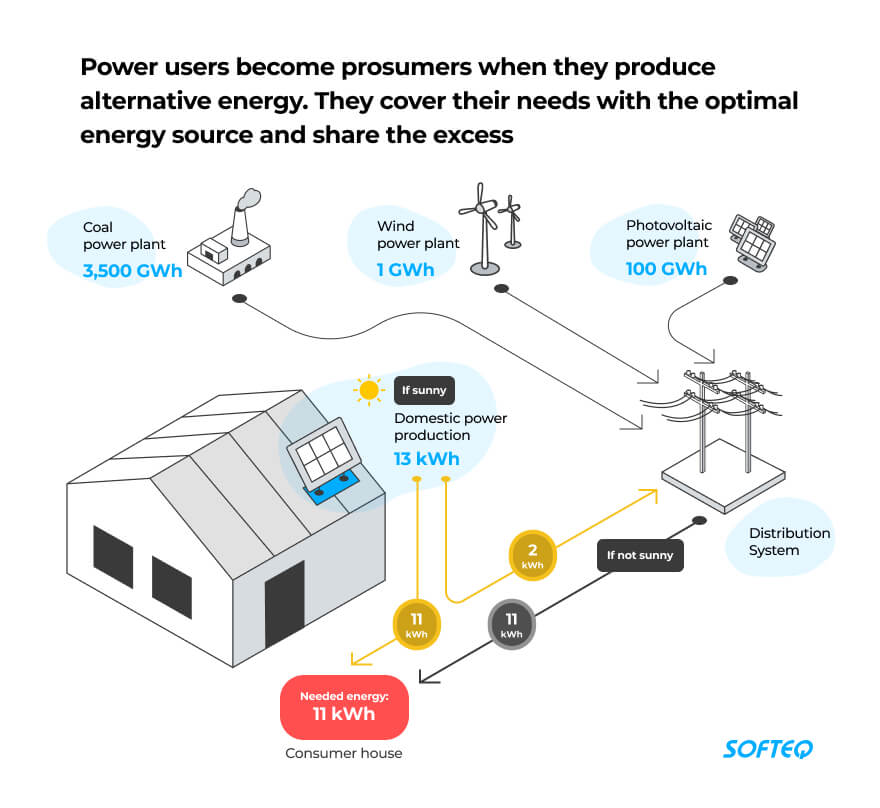
There are many ways to produce alternative energy—heat pumps, solar panels, and wind turbines. And a smart grid system can communicate with all of them. Tech advancements make it possible to incorporate new energy sources into the network. In practice, power consumers can choose the optimal energy source depending on the weather conditions or peaks.
The prosuming model brings more benefits to all parties, namely:
- Owners of solar, wind, or hydro assets can use various forecasts to get financial profit
- Energy companies can predict power demand according to weather, energy markets, and human behavior
- Energy mix helps energy companies save budget on grid infrastructure. This is because power consumers use the energy generated on site or close to the point of generation
Use Cases: From Solar Panels to Energy Trading
Rooftop solar panels are the most common type of prosuming for many households today. Customers may also use panel monitors to watch energy supplies and needs, and prioritize loads. For example, mobile apps can be handy here to control energy streams.
With the rise of renewables, developing energy storage facilities makes more and more sense. There are different ways of storing energy. For example, it’s possible to convert the energy into compressed air and store it in underground tanks. Another solution—pumped hydroelectric dams—generate and store energy by moving water between two reservoirs.
Real-Life Example. The solution from the British energy supplier SSE is a smart grid, aggregation, and trading platform. It allows power customers to earn from sharing the electricity they produce. Users can feed the grid with electricity from their assets. This can be a heat or power unit, solar panel, or wind turbine. Then, the energy company can distribute this energy to cope with spikes in demand.
Major benefits: supply and demand optimization, efficient energy distribution, lower carbon footprint, more control over energy usage, and money savings
Trend 3: Aerial Inspection with Drones
Self-piloted drones are now common in many sectors—from agriculture and construction to the security and energy industry. Their adoption is driven by three main factors. IoT platforms and the possibility to store and analyze data in the cloud is on rise. The price of hardware components is going down. 5G networks are slowly but surely spreading across the USA and Europe.
Drones can capture sensor data and high-quality images of equipment from almost any angle. Other inspection methods can hardly provide this. Inspection drones leverage sensor and video data for object tracking, self-navigation, and collision avoidance. With machine learning solutions on board, it’s easier to make sense of disparate inspection data.
In real life, self-piloted drones help oil and gas companies monitor miles of pipelines, track progress on construction sites, and assist agronomists with planting or watering crops. They can inspect the facilities and power lines for the energy industry.
Experts predict that the drone industry will reach $1.5 trillion by 2040.
Morgan Stanley
Use Cases: From Heavy Lifting to Fire Spewing
The use of drones is growing in the energy sector. As innovative energy solutions they help access remote sites. Solar power plants, in particular, need frequent inspections and maintenance. Drones may replace people in hazardous areas. Moreover, UAVs can be more effective than human workers because they can reveal defects better.
Energy companies use quadcopters or hexacopters for heavy-lifting to remote sites. Fire-spewing drones help keep power lines free from unwanted debris. They can remove kites, nests, and balloons that are stuck on electric lines.
Real-Life Example. Acecore Noa is a heavy-lifting hexacopter created in the Netherlands. The drone is capable of carrying up to 44 pounds with a max flight time of up to an hour. It has a 360-degree field of view. The drone comes in handy for land surveying, 2D and 3D LiDAR mapping, inspecting power lines or wind turbines.
Key benefits: remote access to hazardous areas, fewer people involved, fast and more efficient inspection
Trend 4: Use of Digital Twins
Digital twin technology introduces virtual clones of physical assets. Sensors attached to equipment units can feed performance data to virtual replicas of physical units—digital twins. It’s possible to feed data to ML algorithms to detect and warn operators about potential issues or system failures so they can take immediate action.
In the energy industry, digital twins optimize the operation and maintenance of equipment, systems, and manufacturing processes. Applied energy innovations also show big potential in many aspects, namely:
- Assisting in managing assets
- Real-time predictive analytics
- Demand management
- Support in research and innovation
Experts predict the increase in demand for digital twins among power businesses from 2021 to 2026. Overall, the global digital twin market size is expected to reach $48,2 billion by 2026.
Markets and Markets
Use Cases: From Training to Simulation Scenarios
Energy companies can visualize the entire grid with digital twins. It's possible to watch it in real time and remotely detect which parts have equipment overloads or voltage range problems. Digital twin technology also enables grid operators to run simulation scenarios. For example, they can check how grid upgrades will affect operational costs.
Digital twins can also ease the training process. With such models, employees can see internal components and learn how to repair and service energy equipment faster. In general, a digital twin can automate the training process.
Real-Life Example. Electrical Digital Twin from Siemens introduces a digitalized model of the physical grid. It can represent the data across all synced utility systems. Operators can run simulations from one multi-user database. Thus, it becomes easier to plan, operate, and maintain grids. No duplicated labor, system-wide blackouts, and extra costs.
Benefits: tech-savvy assistance in maintaining of equipment, remote access to hazardous areas, reduced number of severe issues in the fields, automated training processes, and decreased repair costs
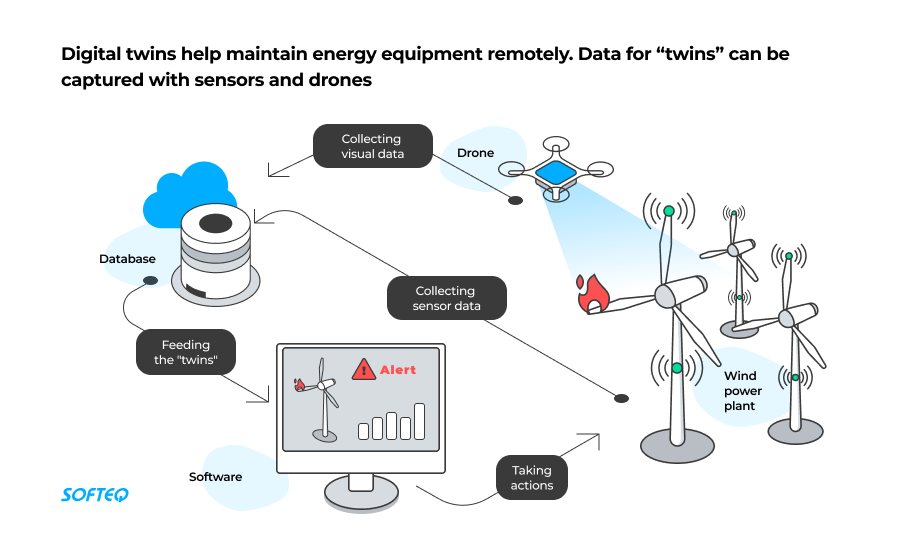
Bottom Line
Today, companies work hard to comply with regulatory standards to mitigate their climate change impact. They use technologies to become more efficient and green. In the meantime, digital transformation also brings security risks. Softeq can help you with both—creating a strong security infrastructure and following new, strict regulations. We'll help deliver an innovative solution and start from any stage—from idea generation to production-ready designs all under one roof.
More articles on the topic
